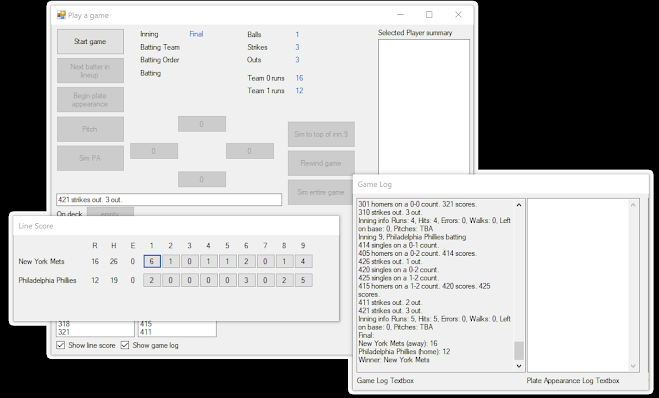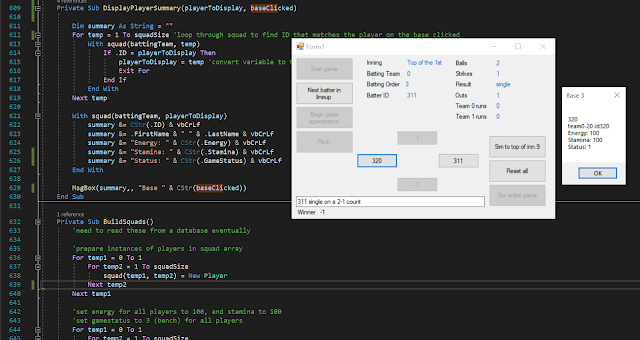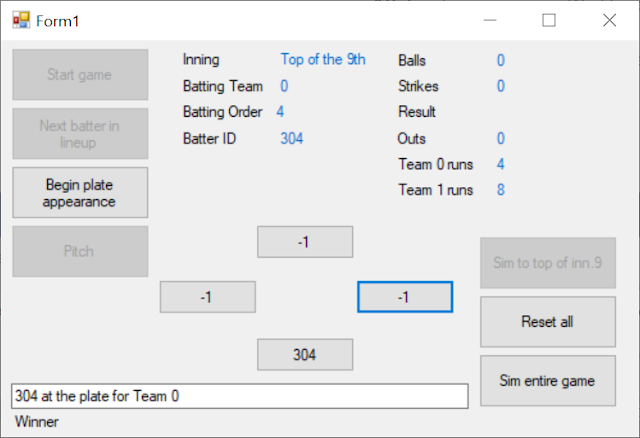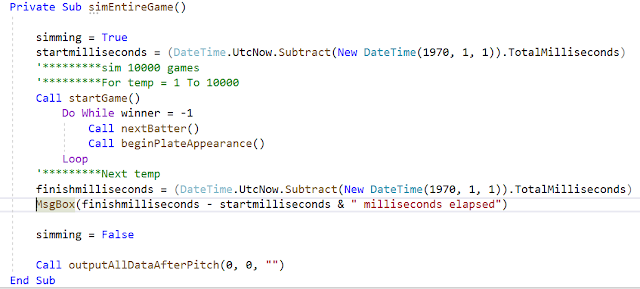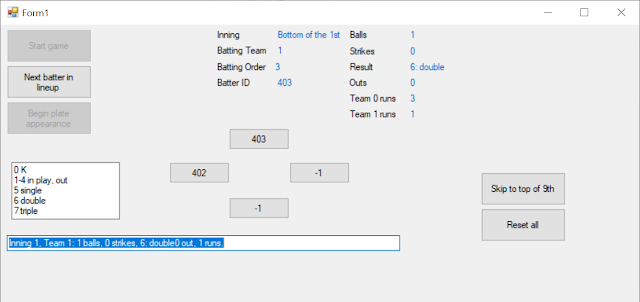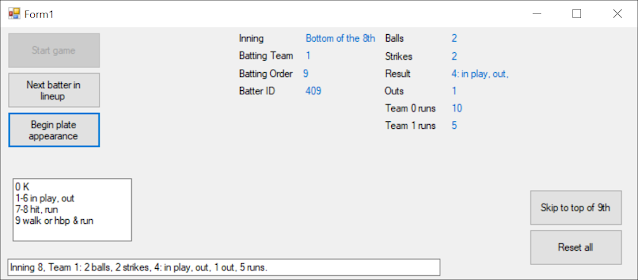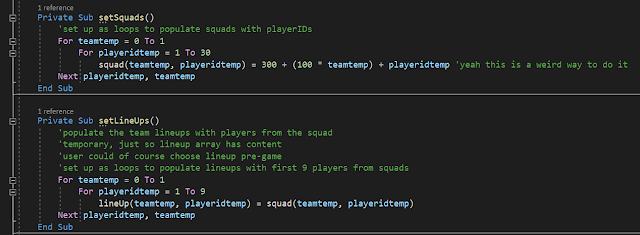Baseball game dev diary: V1.1.1.202101011620 Adding a diamond

Having overcome the frustration of the last lot of changes, I shifted my focus to improving the interface somewhat. Game log and line score now visible by default. Fixed base buttons getting messed up when simming forward. Was progressing to next batter before checking which base buttons needed disabling, so batter, on deck and in hole were always enabled after simming forward. Line score buttons now clear when rewinding game. Replaced function to generate a rounded up inning number (called 29 times) with an integer variable and add to it when incrementing inning only if int(inning) is not equal to inning number (ie only when progressing to top of an inning). Probably more efficient. Made the start game, sim forward, rewind and sim game menu items not buttons, and the show game log and show line score menu items, not checkboxes. Will remove buttons once I’m satisfied menu items are working correctly. Game log and line score toggles work as required. Moved the call to ButtonsTogg
